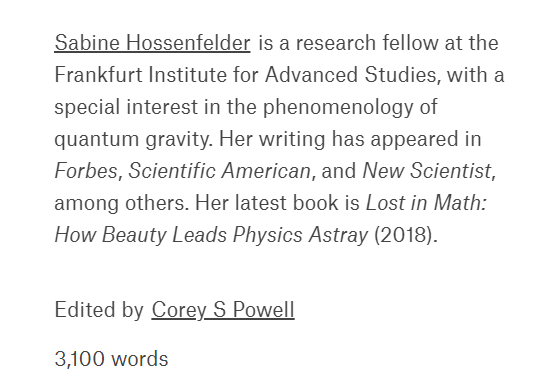The superfluid model of dark matter

The superfluid Universe
Quantum effects are not just subatomic: they can be expressed across galaxies, and solve the puzzle of dark matter
https://aeon.co/essays/is-dark-matter-subatomic-particles-a-superfluid-or-both


Most of the matter in the Universe is invisible, composed of some substance that leaves no mark as it breezes through us – and through all of the detectors the scientists have created to catch it. But this dark matter might not consist of unseen particle clouds, as most theorists have assumed. Instead, it might be something even stranger: a superfluid that condensed to puddles billions of years ago, seeding the galaxies we observe today. This new proposal has vast implications for cosmology and physics. Superfluid dark matter overcomes many of the theoretical problems with the particle clouds.
It explains the long-running, increasingly frustrating failure to identify the individual constituents within these clouds. And it offers a concrete scientific path forward, yielding specific predictions that could soon be testable. Superfluid dark matter has important conceptual implications as well. It suggests that the common picture of the Universe as a mass of individual particles bound together by forces – almost like a tinker toy model – misses much of the richness of nature. Most of the matter in the Universe might be utterly unlike the matter in your body: not composed of atoms, and not even built of particles as we normally understand them, but instead a coherent whole of vast extension.
‘For many years, people had a very simple model for dark matter: collisionless particles that don’t emit light,’ says Justin Khoury, a professor of theoretical physics at the University of Pennsylvania. ‘But in the last 20 years or so, as observations and [computer] simulations have improved, there are some tensions on galactic scales with this simple model.’ Collisionless dark-matter particles do not substantially interact with each other, and therefore do not settle down into compact structures equivalent to stars and planets. Since dark matter does not (by definition) emit light, the evidence for it comes from its gravitational effects: unseen material seems to have influenced the formation, rotation and motions of galaxies. On very large scales, collisionless dark matter generally matches up well with astronomical observations. On smaller scales, however, this popular and widely used dark-matter model predicts that more material would clump in galactic centres than astronomers actually find, an issue known as the ‘cusp problem’. The model also results in too many satellite galaxies for the Milky Way, and it fails to explain why the ones we have lie almost on a plane.
Finally, collisionless dark matter gives no hint as to why the brightness of spiral galaxies is correlated with their rotation velocity. The simple model, it seems, was too simple. One possible explanation for these shortcomings is that physicists have missed an important astrophysical process in galaxy formation. But Khoury doesn’t think so. For him, the problems hint at something deeper. It isn’t only that the model of collisionless, cold dark matter has its difficulties fitting some data, it’s that an entirely different model does better with exactly those observations with which the standard model has difficulties. Instead of invoking new, undiscovered particles, this different model posits that the evidence for dark matter is instead due to a modification of gravity. There is no direct way to measure how gravity behaves over distances of thousands or millions of light years. Subtle effects that cannot be detected on Earth could be powerful enough to have a significant influence on entire galaxies.
snip
Igel
(35,320 posts)It's a rather clever idea, actually.
We can't get up to the eV to test this by looking for the particles (whatever properties they have--I have to assume this wasn't an oversight in the original source before it was chewed and predigested for regurgitation into the pop science literature hatchlings' open maws), but the testable predictions made for lensing effects are alluring and enticing.
Then again, there's the proposed FCC (Future Circular Collider) making the Large Hadron Supercollider (or, as far too many of my kids' spellcheckers--they claim--put it, the "Large Hard on Supercollider) the runt of the family. If the FCC is ever implemented.
Hossenfelder objects to spending the $12G for it, being a recent converted zealot to the "climate emergency".